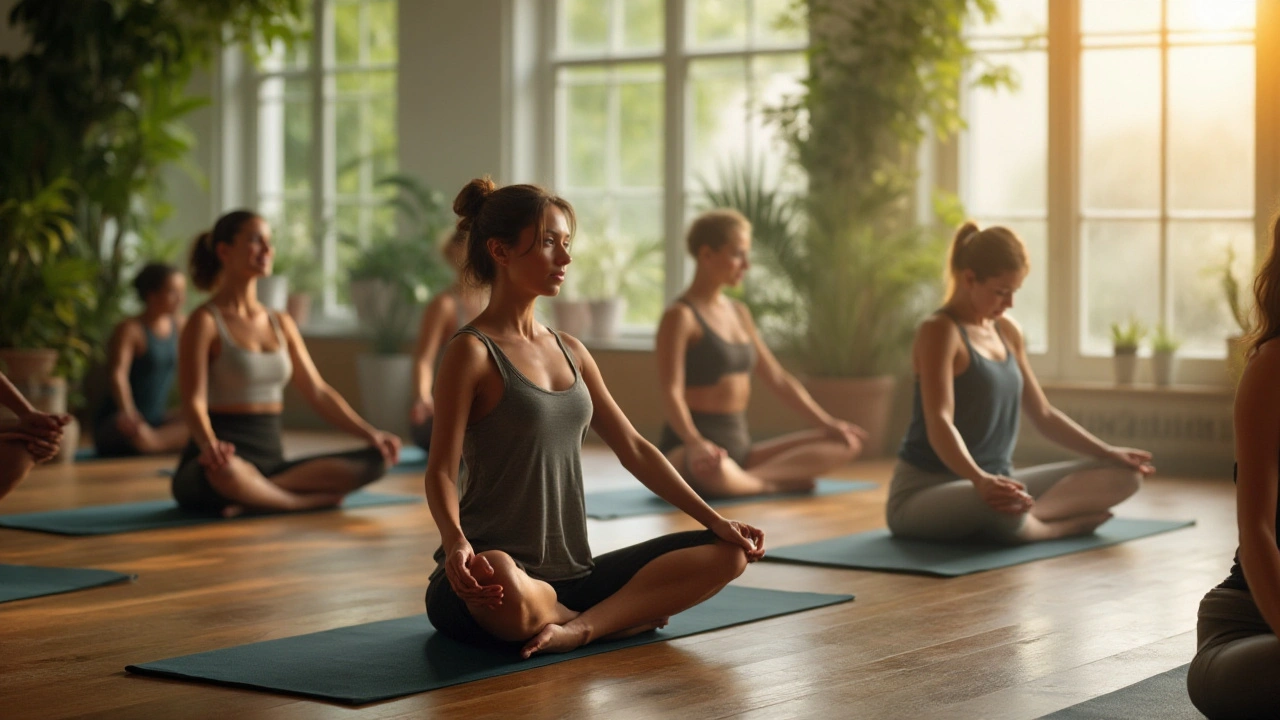Fascia Stretching: Simple Routines to Improve Mobility
Stiff after sitting or sore after workouts? Fascia stretching targets the connective tissue that wraps your muscles and joints. When fascia gets tight it restricts movement and makes muscles feel stuck. The good news: a few slow, focused moves and a little self-release work can make you more mobile and less achy without long sessions.
How to work with your fascia — the basics
Fascia responds better to slow, sustained pressure than to fast bouncing. Aim for smooth movement and holds of 60–120 seconds on tight spots. Breathe slowly while you hold a position — long exhales help tissue relax. Use tools like a foam roller, a small massage ball, or a strap for deeper spots. Don’t chase pain; mild discomfort is okay, sharp pain is not.
Start sessions with 5 minutes of gentle joint movement — shoulder circles, hip swings, ankle pumps — to warm the area. Then pick 3–5 stretches or release moves and spend 1–2 minutes on each. A short, consistent routine three times a week gives better results than occasional long sessions.
Practical stretches and release moves
1) Foam roller for the upper back: Lie on a roller across your shoulder blades, feet flat, hands behind your head. Breathe and relax into the roller. Move slowly up and down a few inches, stopping on tight spots for 60–90 seconds.
2) Calf wall release: Stand facing a wall, place a soft ball or small roller under one calf. Shift your weight forward until you feel pressure. Bend the knee of the front leg slightly to adjust the intensity. Hold and breathe for 60–90 seconds, then switch sides.
3) Hamstring strap stretch: Lie on your back, loop a strap or towel around your foot, keep the knee soft and straighten the leg slowly until you feel a long tension (not sharp). Hold 90–120 seconds — this helps the connective tissue along the back of the leg.
4) Glute release on a ball: Sit on a firm ball, shift to one buttock, and roll slowly to find tight spots. Pause and breathe into each spot for up to 90 seconds. This eases deep, stubborn tightness that resists regular stretching.
5) Neck and chest opener: Stand in a doorway, place forearms on the frame, step forward until you feel a stretch across the chest. Hold 60–90 seconds while softening the neck and breathing deeply.
Keep reps slow. For release moves, move into a tender spot and stay until you notice the tension ease. If nothing changes after 90–120 seconds, gently move out and try a different angle.
If you want guided options, check our deeper reads on related bodywork methods: Hellerwork Therapy, Rolfing for Scoliosis, and Trigger Point Massage Therapy. These approaches often include fascia-focused work that helps long-term.
When to see a pro: if pain is sharp, swelling appears, or mobility keeps getting worse despite consistent home work, see a physical therapist or a trained manual therapist. They can assess restrictions and suggest safe, targeted therapy.
Small, steady steps beat occasional extremes. Try a 10–15 minute fascia routine after movement or at the end of the day and notice how your range and comfort change over a few weeks.

Demystifying Fascia Stretching: What It Is and How It Helps
Fascia stretching releases tight connective tissue to improve mobility, reduce pain, and enhance movement. Learn how slow, sustained stretches-not quick pulls-can transform stiffness and help you move better every day.

Enhance Your Yoga Practice with Fascia Stretching Techniques
Fascia stretching involves focusing on the connective tissue that wraps around muscles, playing a crucial role in flexibility and movement. Incorporating fascia stretching into your yoga practice can lead to improved posture, enhanced flexibility, and a better sense of balance. By learning about fascia, yogis can prevent injuries and engage more mindfully in their practice. This approach fosters a deeper connection between the body and movements, making yoga more enriching.

Unlocking Relief: Fascia Stretching Techniques for Chronic Pain Management
Fascia stretching is more than just a trend; it's a vital part of maintaining flexibility and alleviating discomfort in our connective tissues. Often overlooked, fascia plays a crucial role in our mobility and pain levels. This article explores practical fascia stretching techniques and how they can help manage and relieve chronic pain. Readers will find insights into the benefits of targeted stretching interventions and learn how to safely implement them as part of their daily routine.

The Art and Science of Fascia Stretching
Hey there, in this post, I'm diving into the fine art and scientific approach of fascia stretching. We'll look at how this technique can improve flexibility, enhance muscle function, and contribute to overall wellbeing. Brace yourselves for a journey that blends aesthetics and physiology into a seamless health discipline. If you're curious about the ins and outs of fascia stretching, this piece is for you – the awesome science and elegant artistry of stretching await!
Categories
- Health and Wellness (148)
- Alternative Therapies (86)
- Massage Therapy (40)
- Travel and Culture (15)
- Beauty and Skincare (9)
- Holistic Health (8)
- Health and Fitness (5)
- Spirituality (5)
- Other (2)
- Personal Development (2)



